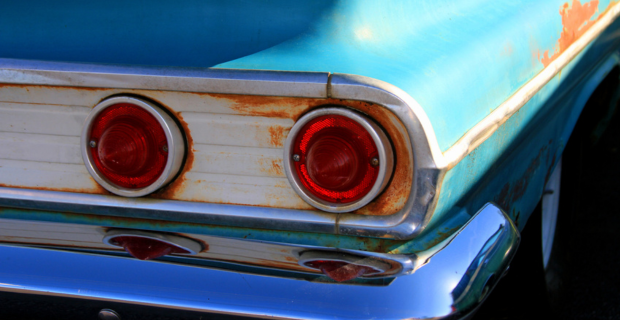Date Published: 2024/09/12
Read Time: mins
Early Rust Control for Your Collector Car

Protecting your car from rust is crucial. Thankfully, a few simple rust control efforts can keep your vehicle looking and performing its best. To help, we have highlighted the most important rust control measures below:
Wax
As one of the most trusted and enduring strategies for preserving classic cars, wax is appealing because it's simple and it works. The genius of wax is that it forms a protective barrier, keeping vulnerable metal surfaces from being overly exposed to harmful environmental elements.
How you apply wax matters. You must use trusted tools and techniques to ensure the wax hits every necessary spot. Many people opt for hand application, involving applicator pads and small, circular motions. Dual-action polishers can be helpful for large surfaces. Before waxing, a clay bar may be required to remove grime from the paint.
Wax selection is also important; many car collectors prefer carnauba wax for its beautiful shine. However, synthetic waxes are more durable and may hold up better when exposed to harsh conditions.
Wash Off Dirt and Debris
Yes, water can lead to rust, but it's often helped by dirt and debris. When these join forces and are allowed to accumulate, your collector car becomes a welcoming environment for corrosion. As water encourages rust formation on metal surfaces, dirt and debris conspire to keep that rust in place. What's more, the debris could include corrosive materials such as salt.
Hence, there is need for a thorough and detail-oriented car wash, which will remove contaminants and address areas that are especially prone to rust: the wheel wells and undercarriage. Just as important is thorough drying, which will prevent water from accumulating in various crevices, where it could eventually prompt even more rust.
Address Existing Rust
Rust can quickly multiply, so early indications of trouble should not be ignored. Early rust control for your collector car should include thorough inspections so that you spot emerging rust as quickly as possible.
Once you notice rust, determine the severity: minor rust may manifest in small spots, while moderate rust tends to take on a flakier appearance. If you decide to tackle the rust on your own, you'll need a wire brush or sandpaper to get rid of loose rust, followed by a rust remover solution. Follow the instructions carefully and keep the solution on the damaged area as long as recommended.
Once the rust has been removed, you should be ready to wash the impacted area, and finally, apply primer and paint. Continue to observe the previously rusted area closely so you notice immediately if rust begins to return.
Protect Your Vehicle with Collector Car Insurance
Collector car insurance can provide valuable peace of mind, especially if you are the proud owner of an older, potentially rust-prone vehicle. Keep in mind that a history of rust could add complications to the process of getting insured — you will want to discuss your concerns carefully with an insurance broker who has a strong understanding of collector cars. If you're ready to learn more, get a quote from Orbit Insurance Services.